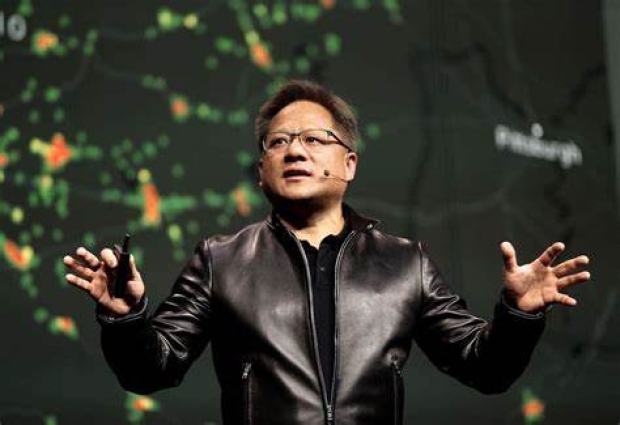Speaking to the gathered throngs that the Interuniversity Microelectronics Centre’s flagship annual shindig, ITF World, Huang said the exponential performance increases in central processing units were the governing dynamic in the tech industry for almost four decades.
He said that the rate at which CPUs become more efficient and powerful was slowing as it becomes exponentially more difficult to squeeze more transistors onto silicon wafers.
Meanwhile, demand for more advanced computing hardware is soaring and global demand for cloud computing is causing data centre power consumption to rocket, Huang said.
Nvidia’s approach involves coupling the parallel processing capabilities of graphics processing units with CPUs. This sparked the AI revolution and Nvidia has responded by reinventing its computing stack for deep learning, creating new opportunities in robotics, autonomous vehicles, and manufacturing.
According to Huang, advanced chip manufacturing involves more than 1,000 steps to produce features the size of a biomolecule.
“Sophisticated computational sciences are performed at every stage to compute the features to be patterned and to do defect detection for in-line process control,” Huang said.
Huang outlined several ways Nvidia’s GPUs are being used to advance chip manufacturing processes. For instance, D2S., IMS Nanofabrication and NuFlare Technology. are using Nvidia’s hardware to aid in the building of “mask writers,” which are specialised machines that create photomasks, or stencils that transfer patterns onto silicon wafers using electron beams.
Nvidia’s GPUs helped accelerate the computationally demanding tasks of pattern rendering and mask process correction, Huang said.
TSMC, KLA, and Laser Technology were using Nvidia’s GPUs to aid in extreme ultraviolet light and deep ultraviolet light mask inspection. The GPUs help by processing classical physics models and deep learning to generate synthetic reference images and detect defects, Huang said.
Nvidia is working with various chipmakers to accelerate computational lithography with its GPU hardware. Huang said computational lithography simulates Maxwell’s equations of light behaviour as they pass through optics and interact with photoresists.
It’s the largest computational workload in chip design and manufacturing, consuming tens of billions of CPU hours yearly. He explained that chipmakers will run enormous data centres 24/7 on such workloads as part of the design process of reticles for new chips.
Nvidia recently announced a new software library called Nvidia cuLitho, which includes various optimized tools and algorithms for GPU-accelerated computational lithography. Huang said he believes this will be the most critical advance in pushing chip design beyond two nanometers.
“We have already accelerated the processing by 50 times. Tens of thousands of CPU servers can be replaced by a few hundred Nvidia DGX systems, reducing power and cost by an order of magnitude.”
Huang believes we’re on the verge of creating a new generation of AI systems that he terms “embodied AI.” He said these are intelligent systems that can understand, reason about, and interact with the physical world. Some examples include robotics, autonomous vehicles and chatbots that can understand the physical world.
Huang introduced a new multimodal embodied AI called Nvidia VIMA, which can perform tasks from visual prompts, such as rearranging several objects to match a scene that it has been given. It can learn from concepts and act accordingly, such as “This is a widget,” “That’s a thing” and then “Put this widget in that thing,” he said.
Meanwhile, Nvidia is building a digital twin of the Earth, called Earth-2, which will be able to make predictions about the weather and climate change.
Earth-2 lives within Nvidia Omniverse, a 3D development and simulation platform, and incorporates a physics AI model called FourCastNet that can emulate global weather patterns 50,000 to 100,000 times faster than existing models. It runs on Nvidia’s GPUs, and will be used to address the need for cheap, clean energy, solutions to climate change, and the advancement of semiconductor manufacturing, he said.




